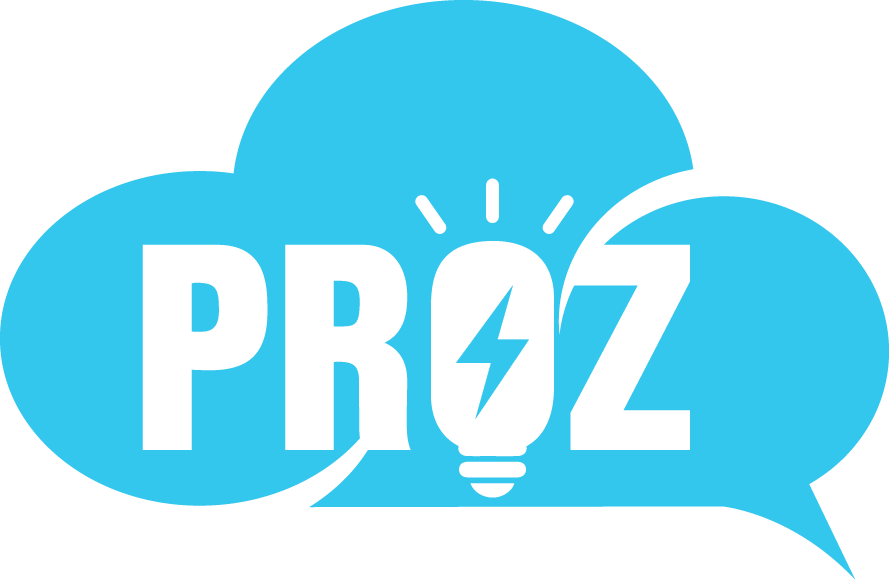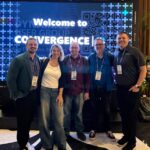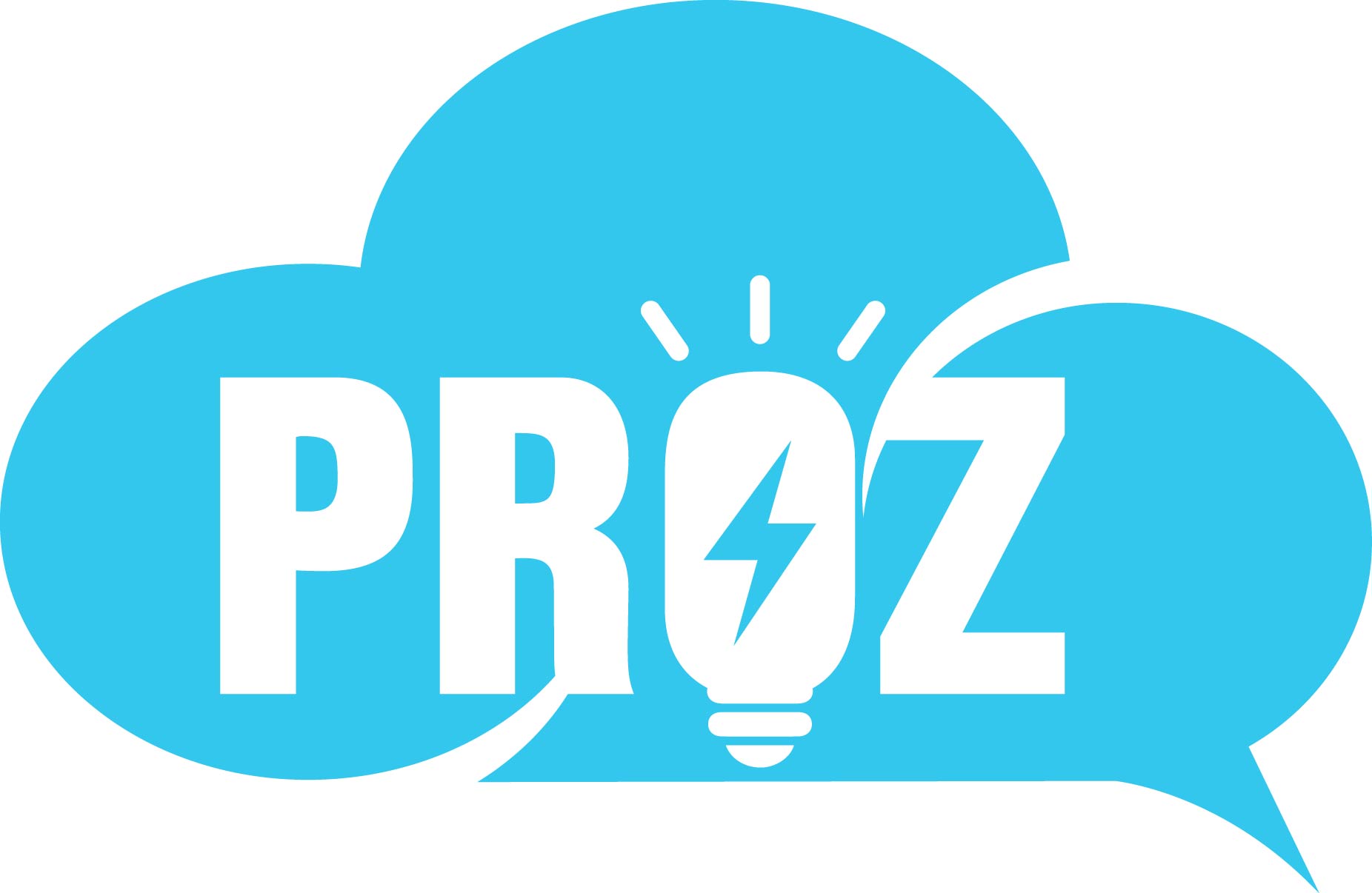How much of your business is automated? According to our latest Small and Medium Business Trends report, 65% of customers expect businesses to adapt to their fast-paced needs, yet many SMBs are balancing sales, marketing, operations, and service, while handling daily operations.
So, why not integrate and automate? Customer relationship management (CRM) integrations can help you reduce manual tasks and connect your tools. This means fewer repeat tasks and more time to focus on what really matters — building relationships and growing your business.
Let’s take a look at how you can automate your CRM with integrations (don’t worry, we won’t get too technical).
What we’ll cover:
What is CRM integration?
CRM integration connects your CRM system with the other tools you use every day — like email, marketing software, e-commerce platforms, and customer support apps. Instead of jumping between different systems, everything works together in one place.
With the right CRM, small businesses like yours can work smarter, not harder. By automating processes across your business, you can boost efficiency, streamline workflow, improve customer experiences, and scale with confidence. Think of automation not as a luxury, but as a must-have for long-term success.
Think about how much easier it is when your emails, customer data, marketing activities, and sales history are all in sync. No more switching between tabs, re-entering information, or wondering if you have the latest details. CRM integration helps you streamline your workflow and focus on what really matters — building strong relationships with your customers.
Here’s an example of CRM integrations in AppExchange:
CloudFiles helps with document management, NetSuite supports financial integration, dataloader.io helps secure your exports, and Outlook connects your email. All easy integrations, available for free.
These quick “plug and play” integrations make your work easier and your business more efficient. When your systems talk to each other, you can spend less time on manual tasks and more time growing your business.
Why CRM integrations matter for small businesses
Small and medium businesses (SMB)s juggle a lot — from sales to customer service — all while keeping operations running smoothly. That’s why CRM integrations aren’t just helpful, they’re essential. They bring everything together, eliminating extra steps so you can focus on what matters most.
CRM integrations eliminate the need to switch between platforms, making it easier to manage workflows and keep customer data organized. They also reduce manual tasks and improve team collaboration, helping your business run more efficiently. No more duplicate data entry or missed interactions. Everything is connected and easy to access.
But it’s not just about efficiency — it’s about knowing your customers. With all your data in one place, you can personalize interactions, anticipate needs, track engagement, and build lasting relationships. When data is connected, your team can work smarter and deliver better customer experiences.
Integrating apps with your CRM helps you automate tasks, improve customer interactions, gain valuable insights, and stay competitive — so you can grow your business without the extra stress.
Attract more customers with Salesforce AI
Five ways to automate your small business with CRM integrations
Let’s talk automation and integration. These integrations will help your contact database connect to the things you do most. Here we go:
1. Connect your data to your CRM
Your website isn’t just a digital storefront — it’s where customers engage and decide to buy. When integrated with your CRM, it becomes a powerful tool to capture leads, track visitor behavior, sync customer data, and personalize interactions.
CRM integrations help you gather visitor details automatically. They also analyze browsing patterns and track customer activity. With these insights, you can engage potential customers at just the right moment. You’ll know which pages they visit, what products interest them, and when they’re most likely to convert — helping you turn casual visitors into loyal customers.
Integrating your website with your CRM helps you automate data collection and improve lead management. Here’s how you can connect the two:
- Embed CRM-connected web forms: Capture visitor information automatically by adding forms to landing pages and contact pages.
- Set up website tracking and analytics: Sync visitor activity with your CRM to monitor behavior and personalize follow-ups.
- Automate lead capture and qualification: Use AI-powered tools to collect, monitor, categorize, and score leads instantly.
- Sync customer data in real-time: Ensure every interaction, from purchases to inquiries, updates your CRM for a complete customer profile.
- Integrate live chat and chatbots: Connect chat tools to your CRM to store conversations and trigger automated responses.
- Link email and marketing automation: Use website data to personalize email campaigns, target audience, retarget visitors, and nurture leads effectively.
Just get started.
No matter where you are on your journey as a small business owner, you can get started with Starter Suite — the all-in-one AI CRM your SMB needs.
2. Feed your marketing automation into your CRM
The best marketing doesn’t just reach people — it meets them where they are, with the right message at the right time. That’s why marketing automation works best when it’s connected to your CRM. When your tools work together, you can turn scattered data into smarter, more personalized customer interactions — without extra manual effort.
So how do you automate your marketing? Start by connecting your CRM to your marketing automation tools. This helps you:
Send the right emails at the right time: Automate welcome sequences to greet new subscribers, nurture leads with timely follow-ups, re-engage inactive customers with special offers, and send reminders for abandoned carts or incomplete sign-ups. Use triggers like sign-ups, purchases, or browsing behavior to ensure your emails feel timely, relevant, and personal.
Score and prioritize your leads automatically: Assign scores based on key interactions, such as email opens, website visits, content downloads, and form submissions. Use these scores to identify your most engaged leads, segment them based on interest level, send them personalized content, and pass them to sales at the right moment for a smooth handoff.
Schedule and automate your social media posts: Plan content in advance to maintain a consistent presence, share blog posts and product updates to educate your audience, schedule interactive polls or Q&As to drive engagement, and track performance directly in your CRM to refine your strategy.
Segment your customers for more personalized marketing: Automatically group contacts based on behavior, preferences, demographics, and past purchases to create targeted marketing campaigns. Send personalized offers based on buying history, recommend relevant products or services based on engagement trends, adjust messaging based on customer feedback, and use dynamic content to tailor experiences in real time.
Create workflows to handle repetitive tasks for you: Automate follow-ups to keep leads engaged, assign new leads to the right team member based on criteria like location or interest, update customer records with the latest interactions, trigger alerts for sales teams when a lead reaches a high intent score, and send internal reminders to ensure no opportunity is missed.
What can your small business do with marketing automation on
Salesforce CRM?



3. Automate agreements in your CRM
Manual paperwork slows down deals and creates unnecessary back-and-forth for you and your customers. By integrating electronic agreement solutions with your CRM, you can send documents instantly, track approvals in real time, reduce errors with pre-filled customer data, and keep everything secure in one place.
With a CRM-powered e-signature process, you can automate the entire agreement workflow — from document creation to final approval — without chasing paperwork or manually updating records. Whether you’re handling sales contracts, service agreements, lease documents, or vendor paperwork, everything stays organized and accessible within your CRM.
How to automate agreements in your CRM:
- Generate contracts instantly with pre-filled customer data to reduce manual entry and ensure documents are accurate from the start.
- Set up automated approval workflows to route agreements to the right people and trigger follow-up reminders.
- Enable e-signatures on any device so customers can sign agreements from anywhere, improving convenience and speeding up the process.
- Sync completed agreements with customer records to keep all contracts organized and compliant without extra work.
- Use automated notifications to prevent delays by alerting teams when an agreement is pending or needs review.
4. Sync your accounting software with your CRM
Managing finances can get messy when sales and accounting systems don’t communicate. Integrating your accounting software with your CRM helps you track invoices, monitor cash flow, automate financial reporting, and reduce manual data entry.
When customer payments and financial records sync automatically, you can gain real-time insights into revenue and expenses. It improves forecasting, speeds up invoicing, reduces errors, and keeps finance and sales teams aligned.
Here’s how to sync your accounting software with your CRM — and why it matters:
Automatically track invoices and payments: Link customer accounts in your CRM to your accounting system so you can see outstanding invoices and send automated payment reminders. With real-time visibility, you can manage cash flow more effectively and reduce late payments.
Sync financial data to reduce errors: Eliminate manual data entry by automatically updating customer records and payment statuses across both platforms. This keeps financial data accurate and ensures sales and accounting teams are always working with the same numbers.
Simplify tax preparation and compliance: Keep all financial records organized by syncing transaction details and invoices between systems. With up-to-date reports and categorized expenses, tax filing becomes smoother and more accurate.
Improve financial forecasting with CRM insights: Use real-time sales and revenue data from your CRM to create better financial projections. By analyzing customer trends and deal pipelines, you can allocate resources efficiently and make smarter business decisions.
Learn 7 ways reps can use AI to speed up sales
See real-life examples of using AI to sell, from automating prospecting to writing emails and getting real-time guidance.


5. Fuse collaboration and communication
Keeping teams connected is a big part of the growing process, especially when work has become hybrid or across different locations. Integrating collaborative dashboards and communication tools with your CRM helps you easily share documents, centralize communication, streamline workflows, and improve team productivity.
With everything in one place, teams can access customer records, update files in real time, and collaborate without switching between platforms. Whether it’s sharing proposals and tracking project updates, a CRM-connected workspace makes teamwork more efficient.
Here’s how to integrate your tools and streamline your workflow:
Store and organize files in one place: Keep contracts, proposals, invoices, and presentations in your CRM to avoid duplicates, improve access, stay organized, and simplify version control.
Collaborate in real time on customer interactions: Sync emails and chats to keep conversations linked and track important details. Attach files to customer records and tag teammates for quick feedback.
Automate document sharing and approvals: Send contracts, agreements, reports, and invoices for e-signatures, set up reminders for pending approvals, track document status in real time, and keep records for compliance.
Work smarter without switching apps: Access emails and shared files from your CRM to save time and stay focused. Assign tasks to teammates and connect documents to customer records.
Boost productivity with Slack for small business
Bring together your team, your customers, and your tools to help take your business to the next level.
Take your small business automation to the next level with AI CRM
Growing a business is exciting, but keeping up with customer demands and daily operations can feel overwhelming. That’s where AI-powered CRM automation like Salesforce comes in — it helps you work smarter, respond faster, streamline operations, and personalize every interaction without extra effort.
With AI-driven automation, a CRM becomes more than just a system — it becomes an intelligent AI assistant, helping your team stay ahead. Whether you’re just starting or scaling up, Artificial intelligence (AI) capabilities like Agentforce can automate key tasks and make sure no opportunity slips through the cracks.
Here’s how AI-powered CRM automation can transform your business:
- Track leads, send follow-ups, analyze prospects’ behavior, and engage customers with AI-driven insights that recommend the next best action.
- Use AI-powered assistants to answer common questions and provide real-time customer support.
- Automate approvals and ensure seamless communication for faster decision-making.
- Use AI to analyze customer behavior and provide data-driven recommendations to fuel business growth. (Back to top.)

Bring it all together: Automate, optimize, and grow
With the right automation, every part of your business runs more smoothly, freeing up time to focus on what truly matters — building strong customer relationships and growing with confidence. Let AI-powered CRM tools take care of the busywork, track leads, automate work, stay productive, and make customers happy with AI agents like Agentforce. Sounds good to us.
Start your journey with a Starter Suite today. Looking for more customization? Explore Pro Suite. Already a Salesforce customer? Activate Foundations and try out Agentforce today.
AI supported the writers and editors who created this article.







